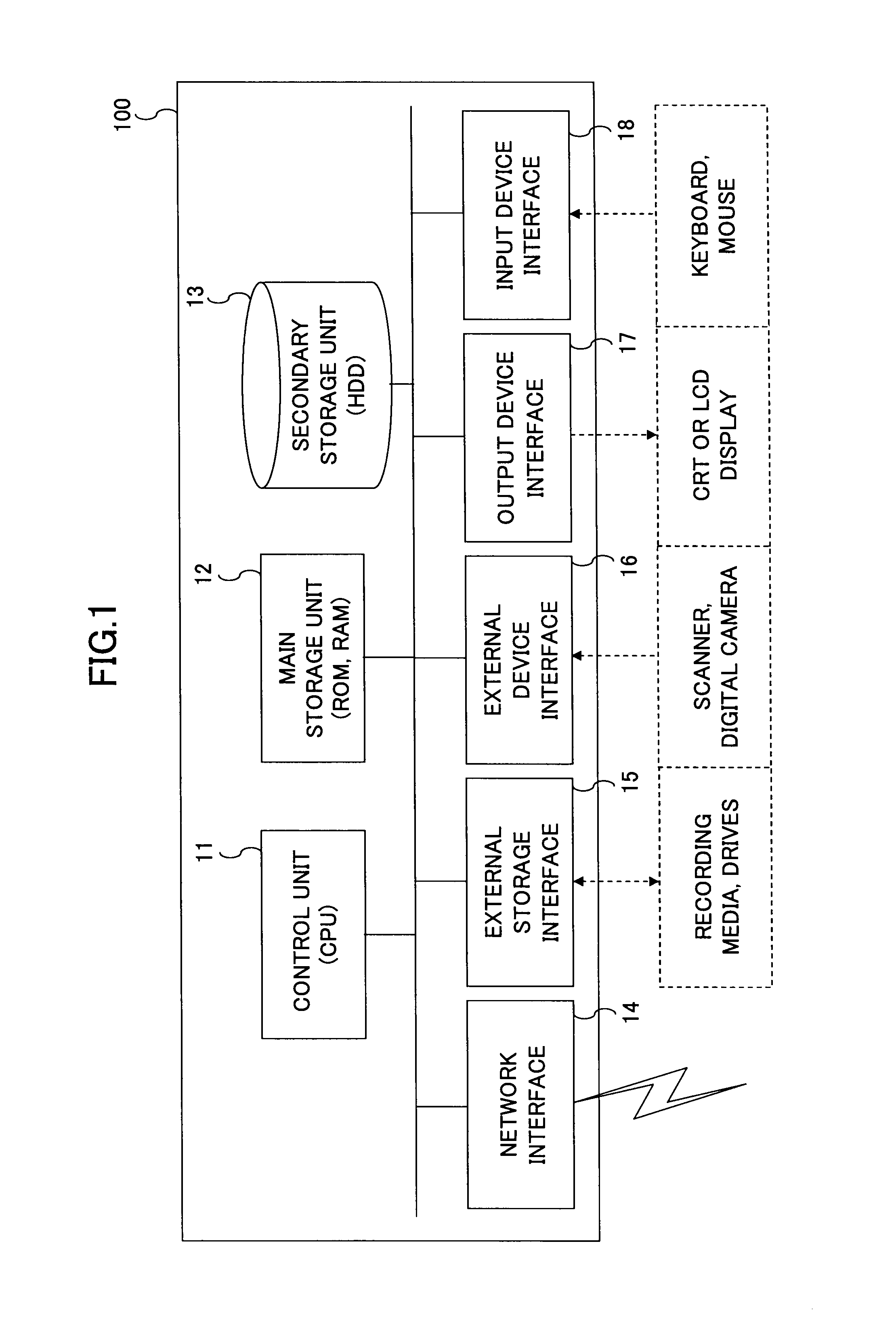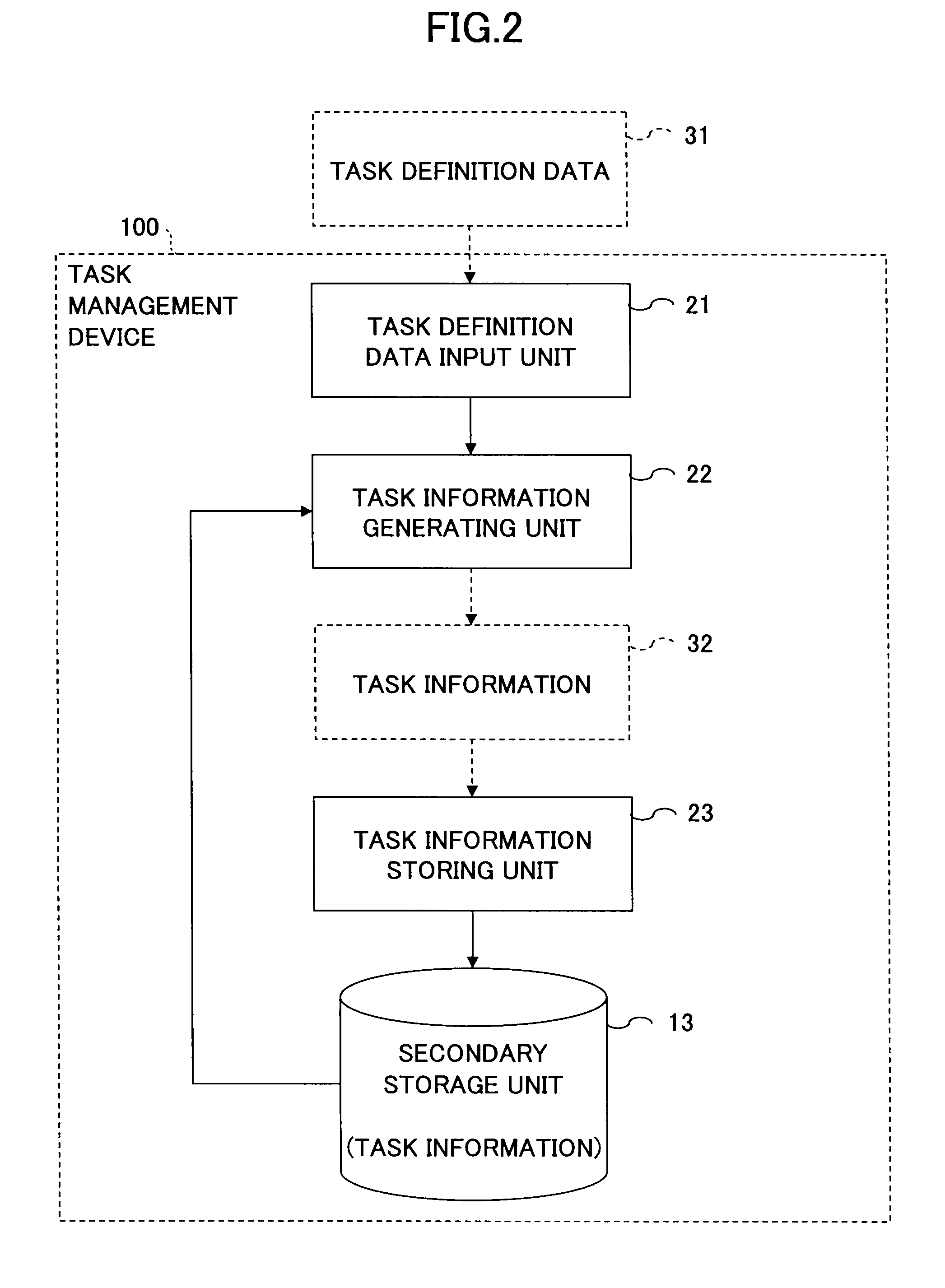Task management device, task management method, and task management program
- Summary
- Abstract
- Description
- Claims
- Application Information
AI Technical Summary
Benefits of technology
Problems solved by technology
Method used
Image
Examples
Embodiment Construction
[0043]Before describing the embodiments of the invention, the fundamental principle of the invention will be explained in order to facilitate understanding of the invention. The task management device in an embodiment of the invention is adapted for eliminating the previously mentioned problem in the management of non-routine tasks. In the task management device in an embodiment of the invention, even when the information indicating the hierarchical relationship between the tasks is indefinite in the progress of the project, it is possible to generate task information for managing the tasks and register the generated task information provisionally. Therefore, at a time the information indicating the hierarchical relationship is fixed, syntactic analysis of the task definition data is performed, and task information in which the information concerning the hierarchical structure is added to the extracted information concerning the tasks, based on a result of the syntactic analysis is ...
PUM
 Login to View More
Login to View More Abstract
Description
Claims
Application Information
 Login to View More
Login to View More - R&D
- Intellectual Property
- Life Sciences
- Materials
- Tech Scout
- Unparalleled Data Quality
- Higher Quality Content
- 60% Fewer Hallucinations
Browse by: Latest US Patents, China's latest patents, Technical Efficacy Thesaurus, Application Domain, Technology Topic, Popular Technical Reports.
© 2025 PatSnap. All rights reserved.Legal|Privacy policy|Modern Slavery Act Transparency Statement|Sitemap|About US| Contact US: help@patsnap.com



